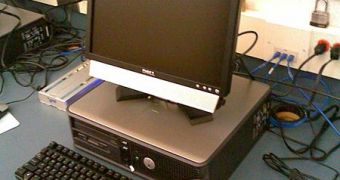Personal computers are now an essential part of people's lives and, as such, some forget the strains such a device poses on the electrical grid, at the very least. That's not to consider the effect it has on the environment when it's time for it to be disposed of. Most of its components have dangerous chemicals in their composition, which can spill if they are not properly contained. Recycling electrical parts is a "developing industry" in countries such as China, where people go through enormous amounts of appliances to collect precious metals such as gold, which can be found in some computers as well.
But closer to home, the PC has an immediate effect on the environment because it requires power and that power has to come from somewhere. Statistics show that an average PC left turned on consumes roughly 746 kilowatts per year, whereas a refrigerator only takes up about 500. Considering the large numbers of computers out there, the strain on coal-powered electrical plants is massive. And they don't power up just computers, but also entire cities and factories. So it stands to reason that they have to consume more coal to cope with demands, which results in more overall carbon emissions.
The basic step for people to take is simply to turn off their computers when they don't use them. Though this is a step that saves up to 500 kilowatts a year from a single machine, it's not enough. Some PC components require energy even when shut down. Hibernation modes and screensavers require hard drives and graphics cards to continue working even when the user thinks they are not operating.
"Vampire" power is another aspect to consider when it comes to power economy. This concept refers to the energy a PC subtracts from the power outlet even when it's completely shut down. The energy can be used to power the internal clock, for example. Removing appliances and PCs from their outlets is the only way to be sure they stop using electrical energy altogether.
Responsible recycling programs are also missing in most countries. In 2005, about 2 million tones of PC components were disposed of. Of them, only 350,000 tones were dropped at authorized recycling pick-up points. The rest were simply thrown to landfills or got exported to places like China, were records on the matter don't even exist. The only solution to this problem is for people to become aware of the impact their old PCs may have on the environment and to act responsibly when disposing of them.

 14 DAY TRIAL //
14 DAY TRIAL //